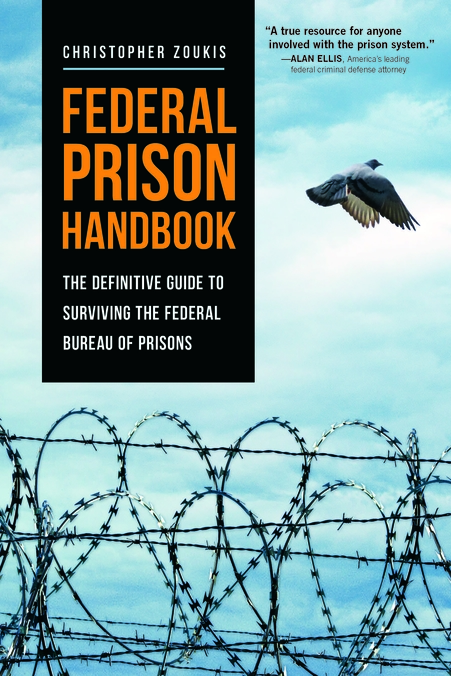×
You've used up your 3 free articles for this month. Subscribe today.
Seventh Circuit: District Court Erred in Denying Compassionate Release Motion by Limiting ‘Extraordinary and Compelling’ Analysis to USSG § 1B1.13
Loaded on Oct. 15, 2021
by Dale Chappell
published in Criminal Legal News
November, 2021, page 25
Filed under:
Compassionate Release.
Location:
Illinois.
by Dale Chappell
The U.S. Court of Appeals for the Seventh Circuit held that the U.S. District Court for the Northern District of Illinois must consider relevant changes in the law that may impact a prisoner’s sentence, even if those changes are not retroactive, when considering a motion for compassionate ...
Full article and associated cases available to subscribers.
As a digital subscriber to Criminal Legal News, you can access full text and downloads for this and other premium content.
Already a subscriber? Login
More from this issue:
- The Real Minority Report Predictive Policing Algorithms Reflect Racial Bias Present in Corrupted Historic Databases, by Matthew Clarke
- Massachusetts Supreme Judicial Court Announces Premature Sex Offender Classification of Incarcerated Offender Who Accepted Classification Violates Procedural Due Process, by Douglas Ankney
- Tenth Circuit Rejects Qualified Immunity for Prosecutor Alleged to Have Fabricated Evidence, Despite no Previous Case with Materially Similar Facts, by Douglas Ankney
- California Supreme Court: Furnishing Drugs Resulting in Overdose Death Does Not Automatically Trigger Great Bodily Injury Enhancement, by Dale Chappell
- Hawaii Supreme Court Announces Five-Factor Test in Determining Whether There’s ‘Fair and Just Reason’ to Withdraw Plea, by David Reutter
- Seventh Circuit: District Court Erred in Denying Compassionate Release Motion by Limiting ‘Extraordinary and Compelling’ Analysis to USSG § 1B1.13, by Dale Chappell
- Anger: A Natural Reaction That Makes the Innocent Appear Guilty, by Jayson Hawkins
- An Inside Look at Operation Trojan Shield How the FBI Crafted an International Encrypted Messaging Sting, by Jayson Hawkins
- Tenth Circuit Announces Adoption of ‘Offense of Conviction Approach’ for Determining Sentence Reduction Under First Step Act § 404(b), by Dale Chappell
- Kansas Supreme Court Affirms Reversal and Dismissal of Murder Charges Based on Speedy Trial Violation, by Douglas Ankney
- Arizona Supreme Court Announces Trial Courts Have Discretion to Deny State’s Request for SVP Screening and Provides Guidance to Courts Exercising That Discretion, by Douglas Ankney
- Arizona Supreme Court Clarifies Proper Fundamental Error Review Applicable to Allegation of a Single, Unobjected-to Instance of Prosecutorial Misconduct, by Douglas Ankney
- Study: Bloodstain Pattern Analyses Display Alarming Lack of Accuracy, by Michael Fortino, Ph.D
- SCOTUS Holds Ramos’ Unanimous Jury Requirement Is New Procedural Rule and Announces No New Procedural Rule Applies Retroactively on Federal Collateral Review, by Dale Chappell
- Second Circuit: Autopsy Report Is ‘Testimonial’ for Confrontation Clause Purposes, Habeas Relief Granted, by Dale Chappell
- Ohio, Now 24th State to End LWOP for Juveniles, by Michael Fortino, Ph.D
- "Eighth Circuit: Government Breached Plea Agreement by Endorsing PSR’s Calculation of Higher Base Offense Level Than Plea Agreement, Curing Breach Not Recognized in Circuit", by David Reutter
- Current Forensic Sciences Not as Objective as Most Believe, by Edward Lyon
- DNA Standards Often Make the Difference Between Life and Death, by Michael Fortino, Ph.D
- Justice Department Orders All Federal Agents to Wear Body Cameras, by Chuck Sharman
- Georgia Supreme Court Announces Merger Error Claims During Sentencing May Be Raised for First Time in Habeas Petition, by Anthony Accurso
- Justice Department Bans Chokeholds and Restricts No-Knock Entries for Federal Agents, by Chuck Sharman
- Ninth Circuit Announces All 3 Subsections Must Be Satisfied to Deny Safety-Valve Relief Under 18 U.S.C. § 3553(f)(1), by Dale Chappell
- Experts Agree: Police Public Relations Consistently Mislead the Public, by Jayson Hawkins
- Study Shows Public Defenders Outperform Court Appointed Private Attorneys, by Michael Fortino, Ph.D
- Investigative Report Highlights Difficulties in Disciplining Cops, by Michael Fortino, Ph.D
- Florida’s Worst Cop Fired for 7th Time, by Jayson Hawkins
- Police Do Not Want to Pay for Damage They Inflicted to Texas Home, by Kevin Bliss
- SCOTUS Reinstates Death Sentence Reversed by Eleventh Circuit, by Matthew Clarke
- California Supreme Court Announces Predicate Offenses for Gang Enhancement or Gang Participation Not Provable Using Expert Witness Testimony Without Personal Knowledge of Facts, by Matthew Clarke
- NYC’s Stop-and-Frisk Still Targets Based on Race, by Jayson Hawkins
- News in Brief
More from Dale Chappell:
- How to Take Your Postconviction Case Directly to the U.S. Supreme Court: A Roadmap to Direct Collateral Review, March 15, 2025
- Federal Habeas Corpus for State Prisoners: Proving Unreasonableness Under AEDPA, Feb. 1, 2025
- Federal Court Rules Michigan’s Sex Offender Registration Laws Violate Constitution, Dec. 1, 2024
- Refuting the Government’s Argument Against Nonretroactive Changes in Law as Grounds for Compassionate Release, Oct. 1, 2024
- Federal Habeas Corpus: Getting Around Procedural Default, July 15, 2024
- The Death of the Savings Clause, May 15, 2024
- Federal Habeas Corpus: Understanding Second or Successive Petitions for State Prisoners, April 15, 2024
- Fourth Circuit Reinstates Relief From Death Penalty, Citing State’s Forfeiture of Argument Against Relief, May 15, 2023
- Federal Habeas Corpus: The Evidentiary Hearing for Federal Prisoners, April 15, 2023
- Federal Habeas Corpus: How to Raise a Fourth Amendment Claim, Feb. 15, 2023
More from these topics:
- Michigan Allows More Releases for Medically Frail Prisoners, Feb. 15, 2025. Compassionate Release.
- U.S. Sentencing Commission Publishes Data Report on Compassionate Release in FY 2023, Oct. 1, 2024. COVID-19, Statistics/Trends, Compassionate Release, Official Report.
- Refuting the Government’s Argument Against Nonretroactive Changes in Law as Grounds for Compassionate Release, Oct. 1, 2024. Retroactivity, Guideline Amendment/Variances and Retroactivity, Compassionate Release.
- California Court of Appeal Holds Defendant Suffering From ALS and Near Death Entitled to Compassionate Release, Sept. 1, 2024. Nervous System, Failure to Treat, Compassionate Release.
- Alabama Denies Parole to Dead Prisoner, Aug. 15, 2024. Wrongful Death, Conditions of, Sentences - Length/Severity of, Compassionate Release.
- Massachusetts High Court Calls Denial of Prisoner’s Medical Parole without Risk Assessment Arbitrary and Capricious, April 1, 2024. Parole Board Misconduct, Special Parole, Compassionate Release.
- ‘How The Government Created a Terrorist’: FBI-Manufactured Crimes Reveal Urgent Need for Reforms, March 15, 2024. Entrapment, Predisposition/Inducement, Government Deception and Trickery, Compassionate Release.
- Illinois Failing to Grant Dying Prisoners Medical Releases, March 1, 2024. Failure to Treat, Contempt (Civil Procedure), Class Actions, Compassionate Release.
- California Slowed, But Not Barred from “Dumping” Sick, Indigent Parolees on Public Hospitals, March 1, 2024. Medical, Injunctions, Probation, Parole & Supervised Release, Medical Care/Treatment, Compassionate Release.
- Fourth Circuit: Disparate Sentence of 30 Years for Two § 924(c) Convictions Constitutes ‘Extraordinary and Compelling Reason’ for Early Release and § 3553(a) Sentencing Factors ‘Overwhelmingly’ Favor Sentence Reduction, Dec. 15, 2023. COVID-19, First Step Act, Compassionate Release.





